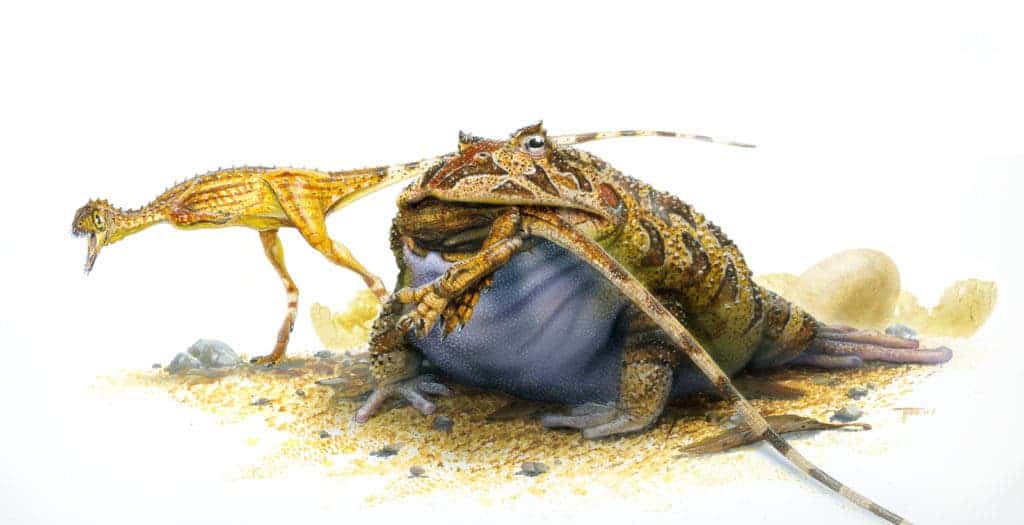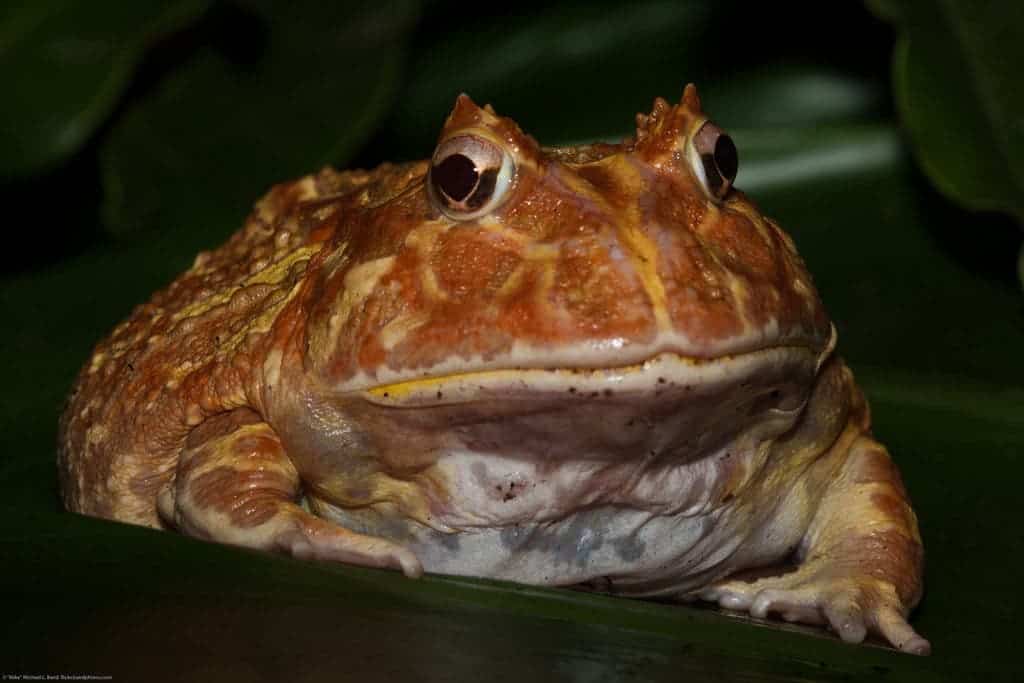When you say dinosaur, huge menacing lizards come to mind. Frogs, on the other hand — well, they’re mostly harmless. There are some exceptions, however, such as a few exotic species whose poison seems sourced straight out of hell. Though they might not look like much, frogs have survived T-Rex and all its kin. Moreover, there was a time when some frogs, albeit humongous by our standards, may have actually preyed on dinosaurs.

A frog so big, it might have been a menace even to dinosaurs
This is according to an international team of researchers who studied the bite force of Beelzebufo ampinga, often called the ‘Devil Frog’, an extinct giant frog that lived up to 70 million years ago in Madagascar. It could weigh as much as 5 kg (11 pounds) and — based on bite force trials run on living frogs from the same Ceratophrys genus — researchers estimate it could shut its jaws with a force comparable to formidable mammalian predators such as wolves and female tigers.
The team, which included scientists from Australia, Europe, and the United States, specifically studied the bite force of South American horned frogs. These amphibians are easily recognizable thanks to their trademark round shape and big mouth, earning them the nickname ‘Pacman’. They’re actually too famous and adorable for their own good, being often captured for illegal pet trade.

Make no mistake, though — the horned frog can be quite mean. Hiding in the tropical rainforests and freshwater swamps of the Amazon Basin, the frog has no qualms ambushing prey as large as itself. Its diet is based on various types of frogs, snails, lizards, mice, and tadpoles of its own species. Speaking of which, the tadpoles are aggressive from the moment of birth and they often attack each other in the water.
Experimenting with small specimens with heads of about 4.5cm in width, researchers found these packed a biting force of 30 newtons (N) or about 3 kg or 6.6 lbs. Extrapolating for larger, adult specimens, rendered a bite force of almost 500 N. Given what we know about the extinct frog from the same genus, Beelzebufo, the scientists estimated it must have crushed prey between its jaws with a force of up to 2200 N. That’s comparable to the bite of many sizeable mammalian predators, the researchers wrote in Scientific Reports.
“This would feel like having 50 litres of water balanced on your fingertip,” says Professor Kristopher Lappin, Professor of Biological Sciences at California State Polytechnic University, in a statement.
This means it could very well have preyed on dinosaurs, albeit the smaller, weaker variety.
“This is the first time bite force has been measured in a frog,” Professor Lappin told Phys.org. “And, speaking from experience, horned frogs have quite an impressive bite, and they tend not to let go. The bite of a large Beelzebufo would have been remarkable, definitely not something I would want to experience firsthand.”
Of course, there’s quite a lot of speculation involved. There’s no evidence the ancient frog ate small or juvenile dinosaurs, and there’s no way of telling for sure. Secondly, the assumption is that the frog had a similar jaw and muscle configuration to its living relatives. As such, these bite-force estimates should be taken with a grain of salt.
Still, it’s amazing to entertain the thought that somewhere, millions of years ago, frogs preyed on dinosaurs and not the other way around.



